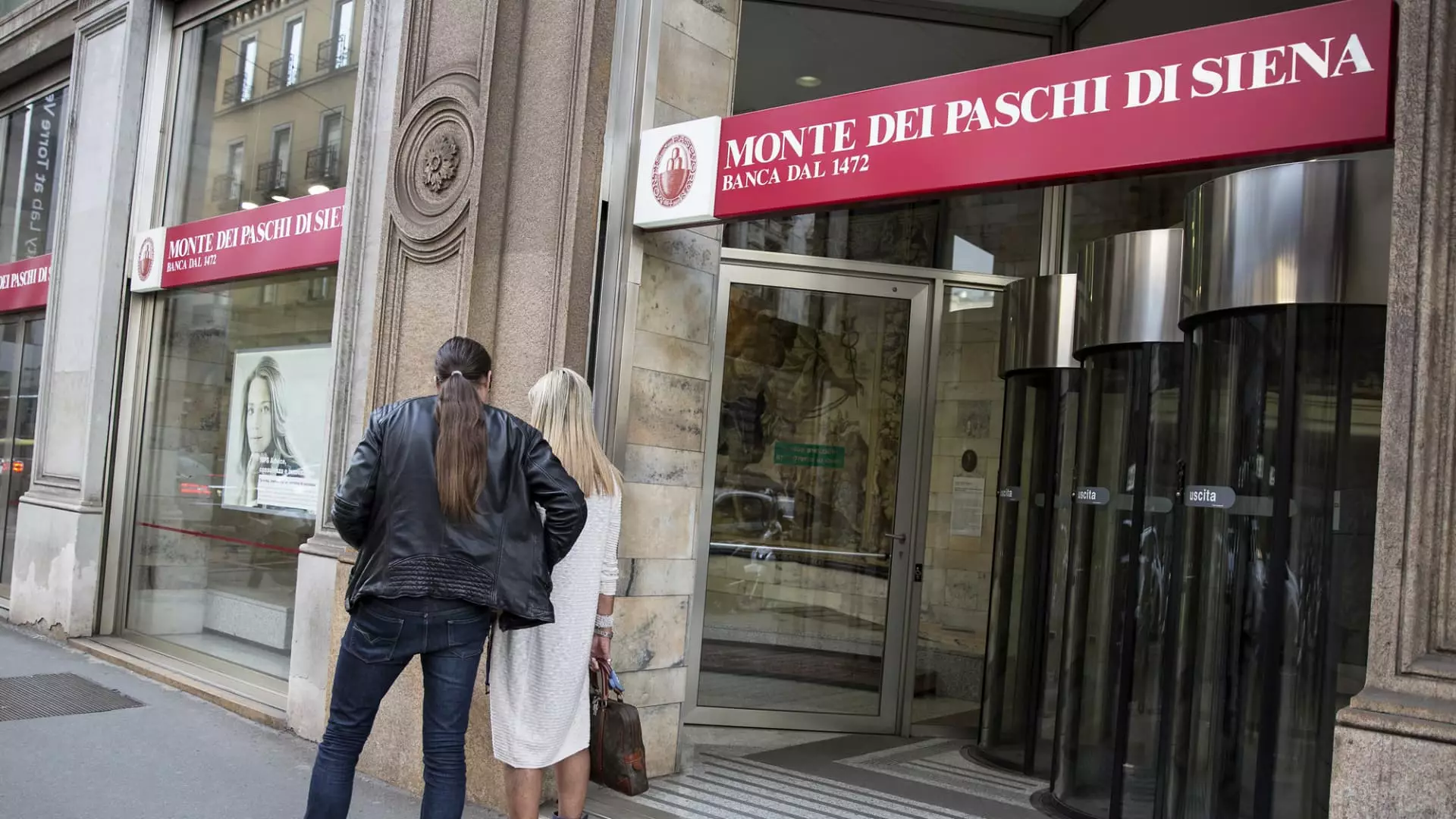In a bold yet arguably reckless move, Monte dei Paschi di Siena (MPS) has revived its intentions to acquire Mediobanca for a staggering €13 billion (or approximately $14.3 billion). This decision, emerging amidst frenetic market conditions, raises serious doubts about the viability of such an ambitious plan. For decades, MPS has struggled with financial instability, raising questions about whether it is genuinely ready to undertake such a significant merger at this juncture.
Given its status as the world’s oldest bank, MPS’s premises come with a rich legacy, yet this legacy is overshadowed by years of government bailouts, requiring public funds to remain afloat. In 2017, after repeated failures to garner necessary private capital, MPS was effectively rescued by the Italian government, a reflection of its precarious position within the financial ecosystem. Fast forward to present day, and the current leadership seems ready to cast aside rational caution in favor of bold assertions, proclaiming that the bank is “back” and “in control of our destiny.” However, can raw ambition really guard against the financial storms the industry faces today?
Ignoring Market Realities
The ongoing turbulence in global equity markets serves as a cautionary tale that MPS’s CEO, Luigi Lovaglio, appears to overlook. Despite Lovaglio’s confident declarations, he is representative of a broader trend amongst financial executives who assert that “size matters” without sufficiently addressing how to effectively achieve and manage that size. MPS’s insistence that the market situation confirms its merger strategy neglects an essential truth: prideful proclamations do not account for the volatility that currently plagues the world of finance. Instead of viable strategies for revenue diversification, these statements echo a dangerous naivety about the present business climate.
Lovaglio’s assertion that being a combined entity would make them “stronger” hardly aligns with a practical understanding of how mergers can unravel in challenging economic times. The results speak for themselves: since MPS announced its intention to acquire Mediobanca on January 24, the value of Mediobanca’s shares has plummeted by around 14%. Investors are sending an alarming message—one that suggests they view this merger more as a destructive gamble than a rational expansion.
Success is Rarely Without Scrutiny
The skepticism surrounding this deal is not without its rationale. Analysts from across the spectrum express divergent views, illustrating the uncertainty that accompanies such a momentous proposal. While firms like Deutsche Bank suggest that opportunities may exist for MPS, they caution that significant synergies between these two different banking entities are highly questionable at best. Barclays, for instance, has expressed outright pessimism, revising its price target for MPS and emphasizing that any excessive spending on convincing Mediobanca’s institutional shareholders would further deplete MPS’s capital reserves.
This is where the crux of the problem lies: MPS is not amidst an enviable state of financial stability that allows for a high-risk gamble. The repercussions from investing in an untried strategy in a struggling banking environment may prove catastrophic—not only for the bank but also for the financial outlook of Italy as a whole.
A Wariness in the Winds of Change
As mergers and acquisitions appear to increasingly shape the landscape of Italian banking, one must ask whether MPS can truly transition from being a liability to an asset through this merger. The consolidation efforts that Lovaglio cites, including UniCredit’s offer to absorb Banco BPM for €10 billion, do not signify that each pursuit is ripe for success. Every banking institution possesses unique complexities, and assumptions about seamless integration can lead to disastrous outcomes.
Ultimately, Italy’s banking environment is precarious at best, marked by uncertainty as economic pressures mount. Lovaglio’s optimism, while perhaps infectious, must be tempered with caution. It is easy to buy into the narrative of resurgence, yet the financial realities paint a far more subdued picture. History has shown that sweeping aspirations often breed chaos, and without the necessary groundwork built on cautious strategy and clear rationale, Monte dei Paschi’s pursuit of Mediobanca may become yet another cautionary tale in the annals of financial history.

